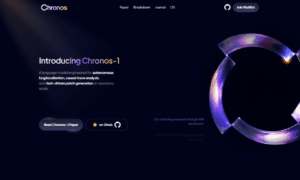Are you ready to take your chit-chats with AI to a whole new level? OpenAI’s ChatGPT is here, and it’s about to revolutionize the way we interact with conversational AI. Say goodbye to superficial small talk and hello to in-depth conversations that will blow your mind. In this blog post, we’re going to unleash the true potential of OpenAI’s ChatGPT, exploring its capabilities, limitations, and incredible possibilities. Buckle up for an unforgettable journey into the world of advanced chatbots – get ready for an extraordinary ride.
Introduction to ChatGPT and how it works
ChatGPT, short for Generative Pre-trained Transformer, is a cutting-edge language generation model developed by OpenAI in 2020. It utilizes deep learning algorithms and natural language processing (NLP) techniques to generate human-like text responses in real-time conversations. With a massive dataset and advanced machine learning capabilities, ChatGPT can understand context, tone, and generate coherent responses like a human.
The core concept behind ChatGPT is its pre-training process where the model learns from an enormous corpus of text data before being fine-tuned for specific tasks. The pre-training process helps the model grasp the nuances of different languages and domains, making it highly versatile and adaptable to various conversational contexts.
The chatbot works by extensively studying patterns and relationships within sentences to comprehend their meaning accurately. Its training involves unsupervised learning techniques such as self-attention mechanisms that enable it to break down input texts into meaningful units called tokens. These tokens are later fed into layers of neural networks that learn how words relate to each other based on their position within a sentence.
One fascinating feature of ChatGPT is its ability to maintain coherence in lengthy conversations. Unlike traditional chatbots that rely on predetermined responses or keyword matching methods, ChatGPT generates dynamic responses based on contextual understanding. This allows it to provide more natural-sounding answers instead of generic or robotic ones.
Benefits of using ChatGPT for conversation generation
The advent of artificial intelligence has opened up endless possibilities for enhancing our daily lives. One of the most exciting developments in this field is OpenAI’s ChatGPT – a powerful chatbot that uses deep learning to generate human-like conversations. Whether you’re looking for casual chit-chat or more in-depth discussions, ChatGPT has the potential to revolutionize the way we interact with technology and each other.
Here are some key benefits of using ChatGPT for conversation generation:
1. Natural Language Processing Capabilities:
One of the main strengths of ChatGPT is its natural language processing (NLP) capabilities. This means that it can understand and respond to human language in a natural, conversational way. Unlike traditional chatbots that are programmed to follow set scripts, ChatGPT uses advanced algorithms to analyze and generate responses in real-time. This makes conversations with ChatGPT feel more authentic and human-like.
2. Versatile Conversation Generation:
ChatGPT is not limited to specific topics or domains – it can engage in a wide variety of conversations on any given topic. Using deep learning techniques, it continuously learns from existing text data and adapts its responses accordingly. This allows for more dynamic and meaningful interactions, making it suitable for various use cases like customer support, educational purposes, or simply entertaining conversation.
3.Larger Knowledge Base:
As mentioned earlier, ChatGPT learns from vast amounts of text data available online – including books, articles, websites, social media posts, etc.
Understanding the GPT architecture and technology behind ChatGPT
The GPT architecture is the key behind ChatGPT’s impressive conversational abilities. GPT stands for Generative Pre-trained Transformer, which is a deep learning model developed by OpenAI, one of the leading organizations in artificial intelligence research. In simple terms, GPT is a type of neural network that can generate human-like text based on the training data it has been exposed to.
One of the main advantages of the GPT architecture is its ability to handle large amounts of text. This makes it ideal for language processing tasks such as chatbots and conversational AI. The model has been pre-trained on a massive amount of text from various sources, including books, articles, and websites. This means that ChatGPT already has an extensive knowledge base to draw upon when engaging in conversations.
The technology used by GPT to generate text is called Transformers. It was first introduced by researchers at Google in 2017 and has since become widely adopted in natural language processing models due to its effectiveness. Rather than reading sentences word-by-word like traditional recurrent neural networks (RNNs), Transformers break down sentences into chunks and process them simultaneously. This allows for parallel computation and thus significantly speeds up training time.
Another essential aspect of the ChatGPT technology is its use of attention mechanisms within the Transformer architecture. Attention mechanisms allow GPT to focus on specific parts of a sentence while generating responses, making it more accurate and coherent in its conversational output. This contributes significantly to ChatGPT’s ability to understand context and generate meaningful responses.
One of the main challenges for language processing models like ChatGPT is maintaining consistency in tone and style. To address this, GPT uses a technique called fine-tuning, which allows the model to adapt its output based on the characteristics of the input data provided. In ChatGPT’s case, this could include specific vocabulary or language patterns used in conversational settings.
Examples of successful conversations using ChatGPT
ChatGPT, developed by OpenAI, has been making waves in the world of artificial intelligence. With its groundbreaking ability to generate human-like text and engage in open-ended conversations, it has opened up a whole new realm of possibilities for chatbots and virtual assistants. In this section, we will explore some real-life examples of successful conversations using ChatGPT.
1) Woebot – A mental health chatbot:
Woebot is an AI-powered chatbot designed to provide emotional support and therapy for individuals struggling with mental health issues. It uses ChatGPT as its backbone to engage in natural conversations with users and provide them with personalized support. Woebot’s success lies not only in its ability to respond empathetically but also in its capacity to remember user’s previous responses and adapt accordingly.
2) Replika – A personal AI friend:
Replika is another popular mobile app that utilizes ChatGPT to create a virtual friend for people seeking companionship or looking for someone to talk to. Users can chat with their Replika about anything from daily activities to deeper thoughts and feelings, without fear of being judged. Its success can be attributed to its realistic conversational skills which have made it a hit among lonely individuals looking for genuine connections.
3) Mastercard’s Facebook Messenger bot:
Mastercard incorporated ChatGPT into their Facebook Messenger bot as part of their customer service strategy. Through this integration, users could ask everyday banking questions like account balance or payment due dates, and receive quick, accurate responses in a conversational format. This made it more convenient for users to get their queries resolved, resulting in an increase in customer satisfaction.
4) Project December – A chatbot for limited interactions:
Project December is a unique chatbot that uses ChatGPT to enable users to have one-time conversations or short interactions with a virtual companion. The conversations are not meant to be continued or remembered by the chatbot, but rather serve as a fleeting experience. Users have reported interesting and engaging interactions with the bot, making it a successful application of ChatGPT’s abilities.
5) Hugging Face – Social AI platform:
Hugging Face is an open-source social AI platform that allows developers to create and train their own language models using ChatGPT. It has led to the development of several innovative applications such as generating text prompts for creative writing and even creating customized chatbots for specific industries like healthcare or finance. Hugging Face’s success lies in its user-friendly interface and community-driven approach towards developing efficient conversational AI models.
Limitations and ethical concerns with AI chatbots
While AI chatbots have the potential to revolutionize communication and improve user experience, there are some limitations and ethical concerns that need to be addressed. As we continue to develop more advanced chatbots, it is important to consider these issues in order to ensure that this technology is used responsibly and ethically.
1. Limitations of Natural Language Processing (NLP):
One of the main challenges with AI chatbots is their reliance on Natural Language Processing (NLP). NLP refers to the ability of a computer program to understand and interpret human language. While NLP has come a long way in recent years, it still has its limitations. For example, chatbots may struggle with understanding colloquial or slang language, which could lead to miscommunication or incorrect responses.
Moreover, NLP also faces issues with sentiment analysis – accurately interpreting the tone or emotions behind a message. This can be particularly problematic if the chatbot is interacting with users who are upset or distressed. In these cases, the bot may respond insensitively leading to negative user experiences.
2. Dependence on Training Data:
AI chatbots rely heavily on training data in order to generate responses. This means that they learn from information provided by humans and use it as a basis for their own responses. If this data is biased or contains inaccurate information, it can greatly affect the performance of the chatbot.
For example, if a dataset used for training contains sexist or discriminatory language, the chatbot may learn and replicate these biases in its responses. This can lead to discrimination and exclusion of certain groups of people.
3. Lack of Emotional Intelligence:
While AI chatbots are becoming more advanced in terms of their ability to understand and respond to human language, they still lack emotional intelligence. They are unable to pick up on non-verbal cues or emotional context that humans use in communication. As a result, they may struggle to understand sarcasm, humor, or other nuanced forms of communication, leading to misinterpretation and inappropriate responses.
4. Potential for Manipulation:
AI chatbots have the potential to be used for malicious purposes such as spreading misinformation or manipulating users. Since they are programmed by humans, there is a possibility for them to be programmed with biased or misleading information. Moreover, they can also be used to gather personal information from users without their knowledge or consent.
Tips for improving the quality of conversations with ChatGPT
ChatGPT is an innovative tool that allows users to engage in conversational interactions with a virtual AI agent. While the technology behind ChatGPT is impressive, the quality of conversations may vary depending on how the user utilizes the tool. In this section, we will discuss some tips for improving the quality of conversations with ChatGPT.
1. Provide Clear and Specific Input:
The key to having a meaningful conversation with ChatGPT is by providing clear and specific input. As an AI model, ChatGPT understands natural language but it needs specific cues and prompts to generate relevant responses. So instead of asking vague questions or making open-ended statements, try to provide more context and details in your inputs.
2. Use Proper Grammar and Punctuation:
It may seem trivial, but using proper grammar and punctuation can significantly improve the quality of conversations with ChatGPT. The model has been trained on a vast amount of text data that follows standard grammatical rules. By following these rules in your inputs, you help ChatGPT understand your queries better, resulting in more accurate and coherent responses.
3.Be Polite and Respectful:
While humans may not be offended by rude or disrespectful language from an AI model, it’s always good to maintain politeness when interacting with ChatGPT. Not only does this promote healthy communication habits, but it also helps in building a positive rapport with the AI agent.
Using ChatGPT in various industries and applications
ChatGPT (Generative Pre-trained Transformer) is a state-of-the-art language processing AI developed by OpenAI. Its ability to generate human-like text responses has not only revolutionized the way we interact with bots and virtual assistants, but it has also opened up numerous possibilities for use in various industries and applications.
1. Customer Service: One of the most prominent use cases of ChatGPT is in customer service. This technology can be used to create chatbots that can handle basic customer inquiries and provide quick responses. By leveraging the vast amount of data available online, ChatGPT can understand natural language queries and respond in a conversational manner, making the experience more human-like for customers. This not only reduces wait times for customers but also frees up customer service representatives to handle more complex issues.
2. E-commerce: With the rising popularity of e-commerce, businesses are constantly looking for ways to improve their online shopping experience. ChatGPT makes it possible for e-commerce websites to provide personalized recommendations to customers based on their browsing history and buying patterns. It can also assist shoppers in finding products by understanding their preferences through casual conversation.
3. Healthcare: The healthcare industry can greatly benefit from ChatGPT’s capabilities. It can assist doctors by analyzing patient symptoms and providing medical advice based on existing research studies and databases.
Future developments and advancements of AI chatbots like ChatGPT
Future developments and advancements in the field of Artificial Intelligence (AI) have revolutionized the way we interact with technology. One such development is the rise of chatbots, designed to simulate human conversations efficiently and effectively. Among these chatbots, ChatGPT has emerged as a prominent player due to its impressive capabilities.
ChatGPT is an AI-powered chatbot developed by OpenAI that uses cutting-edge natural language processing techniques to engage in human-like conversation. It can understand context, generate relevant responses, and learn from interactions with users. With more than 175 billion parameters, ChatGPT has become one of the most advanced AI-powered chatbots available today.
However, like any other technology, ChatGPT is continuously evolving and improving. In this section, we will discuss some future developments and advancements that can be expected in ChatGPT and other AI-powered chatbots.
1) Multilingual Support:
One significant advancement expected in AI chatbots like ChatGPT is multilingual support. Currently, ChatGPT supports only English language interactions. However, with the ever-increasing global connectivity and demand for multilingual capabilities in technology products, it is highly likely that OpenAI will expand ChatGPT’s language abilities soon.
2) Improved Contextual Understanding:
While ChatGPT’s contextual understanding is already impressive compared to other chatbots on the market, there is always room for improvement. Developers at OpenAI are continually fine-tuning their model to improve its ability to understand complex contexts in conversations better . This improvement will allow ChatGPT to generate more relevant and natural responses, making conversations with it even more seamless and human-like.
3) Personalization:
Personalization is another aspect that has great potential for development in AI chatbots like ChatGPT. With advancements in data collection and processing techniques, AI chatbots can gather more information about users’ preferences, interests, and behavior patterns. This information can be utilized to personalize the conversation experience for each user, making it feel more natural and tailored to their needs.
4) Emotion Recognition:
Understanding and responding to emotions is a crucial aspect of human conversation. With advancements in facial recognition technology and sentiment analysis, AI chatbots like ChatGPT may soon be able to recognize emotions from text or voice inputs accurately. By incorporating this capability in ChatGPT, the chatbot can generate appropriate emotional responses based on the user’s mood, making the conversation experience more lifelike.
Conclusion
1. Personal Assistants:
With advancements in technology, having a personal assistant is becoming more and more common. By leveraging ChatGPT, we can build incredibly human-like assistants that can communicate with users in natural language. This could revolutionize the way we interact with virtual assistants – instead of scripted responses, we could have open-ended conversations and get relevant responses based on our needs.
2. Mental Health Assistance:
Chatbots powered by AI have been used to support mental health for quite some time now. With its ability to understand multiple languages and empathize with users, ChatGPT has the potential to become an effective mental health assistant. It could provide personalized support to individuals suffering from anxiety or depression by engaging in meaningful conversations and offering helpful resources.
3. Education:
In today’s fast-paced world, students are constantly looking for efficient ways to learn and improve their skills. Chat bots like ChatGPT could be used as interactive tutors that not only help students with coursework but also engage them in discussions related to their chosen subject area. Moreover, it could provide personalized feedback based on a student’s learning style and progress.
4. Customer Service:
One of the most popular applications of chatbots is for customer service purposes. With its natural language processing abilities, ChatGPT has the potential to improve user experience by providing prompt and accurate responses while handling multiple customer inquiries at once. This could significantly reduce waiting time for customers and improve overall satisfaction.
5. Creative Writing and Content Generation:
As seen with some of the examples generated by ChatGPT, it has the ability to generate human-like text on a wide variety of topics. This opens up possibilities for its use in creative writing and content generation – from generating ideas for stories, to creating product descriptions or even ad copy.
6. Language Learning:
Language learning apps that use chatbots have gained popularity in recent years due to their convenience and personalized learning experience. With its understanding of multiple languages and conversational abilities, ChatGPT could be integrated into these apps to provide users with interactive language practice sessions.
Overall, the potential uses of ChatGPT are vast and diverse – from improving customer service to assisting with mental health support. However, ethical considerations must be taken into account when implementing AI technology like this to ensure that it is used responsibly and ethically. OpenAI itself has acknowledged the potential dangers of unchecked AI development and has taken steps towards responsible deployment of their technology. With continued advancements and proper oversight, chatbots powered by AI like ChatGPT could have a significant impact on various industries in the near future.



































